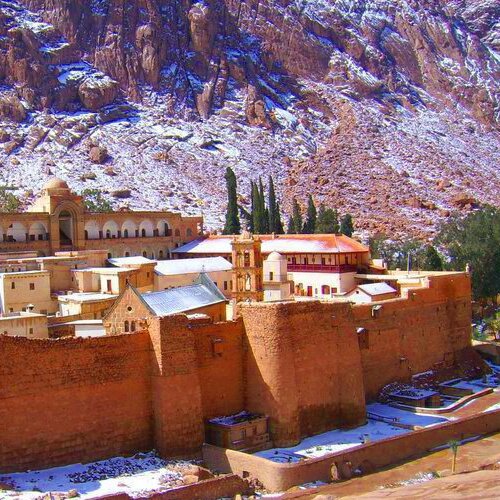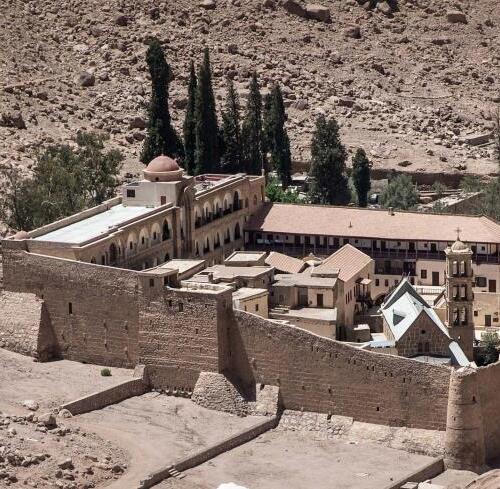No other nation in the world says ‘Welcome’ as often as the Egyptians, and every time, they mean it. While the ancient civilization of Egypt continues to amaze, contemporary Egyptians are equally remarkable.
Saint Catherine Travel Guide
Saint Catherine Travel Guide
Embark on a journey to St. Catherine, a destination that stands out as a beacon of diversity and distinction in the Sinai Peninsula, and indeed, in all of Egypt.
Unlike the major cities of Sinai such as Sharm El Sheikh, Dahab, and Taba, which grace the shores of the Aqaba Gulf to the East and the Suez Gulf to the West, St. Catherine is uniquely nestled in the heart of Sinai. Perched on a lofty plateau 1,600 meters above sea level, it is cradled by some of Egypt’s highest mountains, including the revered Saint Catherine Mountain and the Mountain of Moses. This elevated location bestows upon the city a climate unlike any other in Egypt: pleasantly moderate in the summer and strikingly cold in winter.
St. Catherine’s Monastery, the world’s oldest continuously inhabited monastery, is a cornerstone of this region. Built on the sacred site where Moses (Prophet Musa) experienced the miracle of the Burning Bush, it attracts up to a thousand visitors daily. Many are drawn to climb Mt. Sinai (the Biblical Mt. Horeb, locally known as Jebel Musa), where Moses is said to have received the Ten Commandments. While most visitors arrive on organized coach tours from nearby Red Sea resorts, arriving in the evening and departing post-visit the next morning, St. Catherine and Mt. Sinai also offer a rich, independent travel experience for those who wish to delve deeper into the region’s offerings.
Declared a UNESCO World Heritage Area, the region is a tapestry of cultural and natural wonders. It is home to over 200 religious sites, including other significant monasteries and churches, as well as ruins of Byzantine monastic settlements. The highest mountains in Egypt offer breathtaking views, and the landscape is adorned with spectacular rock formations. This unique high-altitude desert ecosystem is a treasure trove of endemic and rare species, including a range of medicinal plants used by locals for centuries and found nowhere else.
The area’s wadis, or valleys, are dotted with beautiful Bedouin gardens, a testament to the skill and tradition of the Jebeliya (Gebeliya) Bedouin, the region’s original inhabitants. These expert gardeners and camel herders maintain a way of life and culture that has persisted for over 1,400 years. Visitors who take the time to explore can gain insight into their traditional, albeit slowly evolving, lifestyle.
For those planning a visit, this site offers practical and background information about the city, the region, and its people. It also serves as a digital hub for local businesses, projects, and the community, providing free listings that connect visitors with the authentic heart of St. Catherine.
Created On March 18, 2020
Updated On Aug , 2024
ST. CATHERINE Travel Guide



